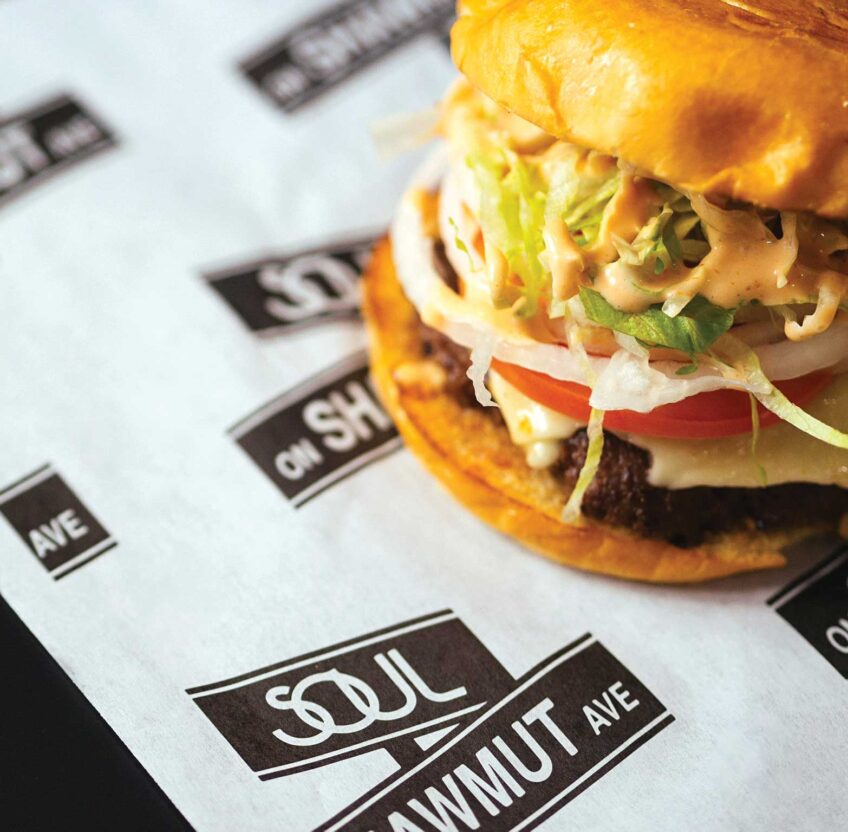
Around half-past eight, in Naalehu, Hawaii, I walked into Shaka, the southernmost bar and restaurant in the United States.
When I asked for food, the goateed man behind the bar apologized for the fact that the kitchen was closed.
“What about poke?” I asked.
That simple question broke the tension between my hunger and his schedule. With an air of relief, he waved me toward America’s southernmost refrigerated Coca-Cola case, which contained several packages of poke (poe-kay), the Hawaiian version of sushi. It consists of cubes of raw fish, most often ahi tuna, tossed in flavorings. Conspicuously absent is any acid like lime juice, which would cook the poke into ceviche. Without such acid, poke is officially raw.
In addition to ahi, other Hawaiian fish like ono and mahi mahi can be made into poke. More recently other fish like salmon or yellowtail have been discovered to make great poke, along with octopus, shrimp and other shellfish, both fresh and frozen.
Hundreds of restaurants on the mainland have figured out as much in recent years, with the number of poke outlets more than quintupling. There are more than 600 poke-eries nationwide, in almost all 50 states.
Until I opened America’s southernmost vintage refrigerated beverage display case, the best poke I’d had on island was from ChoiceMart, a grocery store in Captain Cook that receives an early-morning delivery from the venerable Suisan Fish Market, a 110-year-old establishment with its own fleet of boats and a Japanese approach to handling raw fish. Suisan’s CEO was even interned during the war, after Pearl Harbor when things got real complicated for Hawai’ians of Japanese decent.
Today Suisan’s poke is in demand island-wide, a but a batch made in the early morning, even if from the freshest of fish, will be rough around the edges by afternoon. Once the fish is cut crosswise, the expiration clock starts ticking.
In fact, Hawaiian poke is regularly made with ahi that isn’t fresh, carefully identified as “previously frozen” in stores. To those of us who don’t live in Hawaii, this is your cue that it’s possible to make poke at home that a Hawaiian would eat.
How to eat it
Poke was originally a verb that means “to cut or slice crosswise into pieces” in native Hawaiian. To this day, when ahi is sliced properly the grain is visible. Along with the cubes of fresh ahi, the original poke included salt, seaweed and kukui nuts, aka candlenut, named after the fact that lamp oil can be extracted from them. Over the centuries, other ingredients were incorporated into the palate of poke seasonings: first onions, then tomatoes, and so on.
The poke recipe that has taken much of the world by storm in recent years is ahi tuna prepared shoyu-style, aka soy sauce, sesame oil, scallion, ginger, sesame seeds, chili peppers, salt, pepper and sometimes kukui. But any type of fish that can be served raw can be served poke-style, including yellowtail, marlin and salmon. The number of recipes that have been invented boggle the mind and tease the belly, and include the likes of spicy mayo poke, creamy wasabi with pistachios, and kim chi poke made with crab, octopus, shrimp and fish. Hawaiian-style, which includes limu seaweed, salt and ground kukui nut, is popular as well. You can even get smoked, grass-fed Hawaiian beef.
Make it your own
America’s southernmost poke appeared to be a simple version, little more than ahi tuna with green onions and Maui sweet onions.
I asked the man, “Do you have anything with which to serve the poke? Even a little … ”
“Rice?” we both asked, at the same time.
“Sure,” he said, reaching for my poke. A few minutes later he placed a to-go box on the bar, along with a caddy stocked with bottles of soy and Tabasco sauce, and slender yellow packets of Best Foods mayo. Inside the box: two scoops of rice, my poke and a plastic dish of Japanese furikake seasonings, which include small pieces of nori, sesame seeds, salt and particles of dried fish. Together with the Tabasco and mayo from the caddy, I was able to massage the poke and furikake into a spicy ahi place with a decidedly Japanese feel.
I brought home a second order and ate the poke on salad greens instead of rice.
I’m comforted to know that when I head north to my perch on the frozen mainland, I’ll be able to find frozen ahi, and make a decent version of ahi poke.






